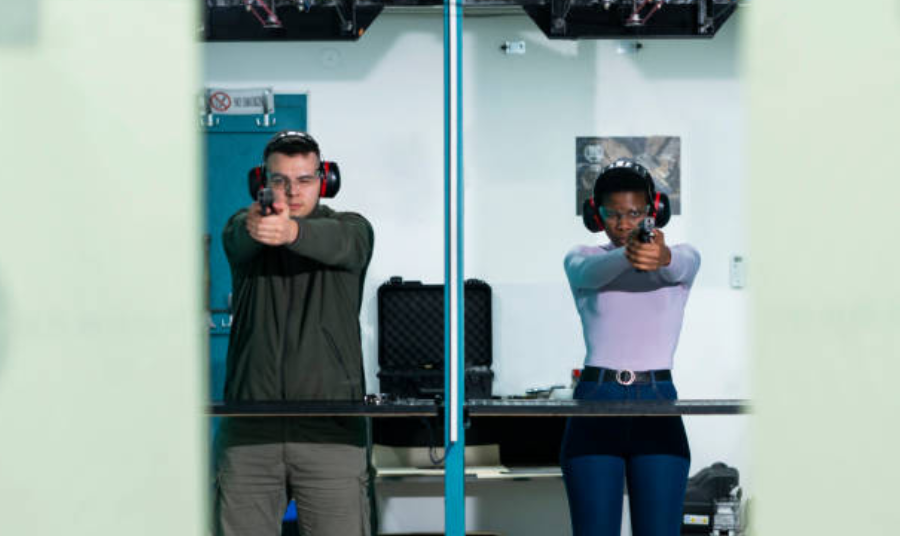According to sales records from gun shops around the United States, 2020 was the busiest year on record for the American gun industry. In the wake of the COVID-19 pandemic, 23 million people chose to exercise their Second Amendment rights and became gun owners for the first time.
Anxiety about the pandemic, worries of impending economic collapse as well as fears of complete government takeover made Americans concerned for their safety and liberty. Likewise, the George Floyd protests in May of the same year increased fears of looting and home invasions, which also fueled gun sales. In some cases, entire inventories were wiped out. Ammo became so scarce that some firearms stores refused to sell a single bullet without the purchase of a firearm.
Yet in the first months of 2023, many of these 23 million new gun owners have relegated their weapons to dust collectors. Many chose to take their guns to the range once or twice then never touched them again. While it’s a good thing that millions of homes have been turned into “hard targets” to deter criminals, it’s not a good thing that many of those new gun owners don’t know how to use their weapons.
Many of these first time gun owners, desperate for some form of protection, simply purchased whatever was available. Shotgun sales went through the roof, and when a gun store ran out of those, pistols and rifles of all makes, models, and calibers flew off the shelves simply because customers wanted “something, anything” to defend themselves with.
Of course, it would be hard for anyone to defend anything if they didn’t know how to use their weapons in the first place. Buying a gun is committing to a relationship with that gun, and like a healthy relationship, firearms proficiency requires maintenance. Here is some basic information all gun owners need to know.
The 4 Rules of Firearm Safety: Essential Guide for New Shooters
-
Always treat every firearm as if it were loaded.
People hear this phrase a lot, but not everyone knows what it means. In essence, this rule asks you to treat every gun with the respect it deserves. When being handed a firearm, it is the responsibility of the person receiving the firearm to assume it is loaded for the sake of safety. The magazine should be removed and the chamber should be checked for any loaded ammunition. This rule ties in with the second rule. -
Never point the firearm at anything you are not willing to destroy.
Even if you have successfully cleared the firearm of ammunition, pointing it at another person or an animal, even if it’s by accident, is reckless and stupid. The gun is an “off switch” for living things, and this rule exists for the safety of firearms owners and those around them. This rule is routinely broken by practical jokers, who should know that no responsible gun owner finds this funny. -
Always keep your finger off the trigger until you are ready to shoot.
Everyone thinks they look cool when they pose with a gun, but the moment they put their finger on the trigger they look like dangerous idiots. Even if someone is following rule 2, a slight itch, a sneeze, or a slip of the trigger finger could result in a hole in the roof, or at worst, a homicide. Unfortunately, for most people who’ve never picked up a gun before, the human hand has a tendency to have all its fingers pointing the same way when people grip an object. New shooters should train to always have their trigger finger extended and placed outside the trigger guard for their own safety and the safety of those around them. -
Know your target and what is beyond it.
Do not assume a round will be stopped by its target. A 7.62x39mm can obliterate cinder blocks and keep going while a .308 will go through thin tree trunks at close quarters. At shooting ranges, you will always see dirt berms piled behind targets for safety, and if you’re building a range at home, you would do well to do the same. You don’t want to kill an innocent bystander because you thought there was nothing behind your paper target and the hundred or so yards of grass beyond it.
Once you get those four rules in your head and practice them, then and only then can you properly and safely handle a firearm. Violating any of these rules at a public range will have every range officer on you like black on tar. If you violate them too often, you may even be blacklisted from your regular range.
If you manage to follow the four firearms rules when shooting at the range, you should also be a responsible firearm owner at home. It’s important to know how to maintain your weapon to make sure you hear a “bang” and not a “click” when you pull the trigger, while also making sure your firearm is stored safely.
Maintenance Tips for New Shooters
When bringing your gun home for the first time, it’s a good idea to learn how to take it apart to clean it. This is especially true for military surplus rifles from the World Wars because they’re likely coated in cosmoline to prevent rust and corrosion.
Field stripping is the process of taking your weapon apart without tools so it can be cleaned and maintained. You should not need any screwdrivers or hole punches for basic field stripping. As long as all the moving parts of your weapon are exposed for cleaning and lubrication, there should be no need to disassemble the rifle any further.
As far as cleaning products, brands like G96 gun oil, Sta-Bil gun cleaner, and Clenzoil are good for all-purpose cleaning and lubrication. Rags can be used to clean surfaces, while cotton swabs are good for hard-to-reach crevasses. Run bore snakes coated with your cleaning products of choice through your barrel five or six times to prevent fouling and to clear out any residue. Motor oil can also work but doesn’t last as long as dedicated gun oil.
Beginner Optics: A Guide for New Shooters
Once you know your gun inside and out and you’re familiar with your shooting fundamentals, you should think about getting the proper accessories to help you shoot better. Shooting with iron sights alone is very limiting, since your eyes must choose to focus on either the front sight, the rear sight, or the target.
Instead, it would be easier to shoot a red dot sight. This simple unmagnified optic displays a red laser on a glass plane. With a red dot sight, a shooter can simply focus on his target and “paint over it” with the red dot. This method of aiming is more natural for the human eye and is also helpful for extending your shooting range.


Note how the front sight post on the pistol with iron sights is considerably more blurry than the well-defined point of aim on the pistol with the red dot sight.
However, with a wide variety of optics to choose from, a new shooter might be overwhelmed with options. Sightmark, for example, offers the Mini Shot M-Spec FMS M1. This compact, durable optic is suitable for both pistols and rifles and has adjustable brightness settings for environments with different lighting. The Mini Shot M-Spec’s rugged frame is constructed of aircraft-grade aluminum, which makes it shockproof to three feet. Its CR1632 battery and very low power consumption give it a maximum battery life of 30,000 hours (3.4 years) at its lowest setting.
Adding any of Sightmark’s fine red dots or riflescopes to a brand-new rifle can only enhance your shooting experience and upgrade your accuracy.
Still have questions? Explore more guides and tips for new shooters at Sightmark’s blog or shop beginner-friendly optics here.




